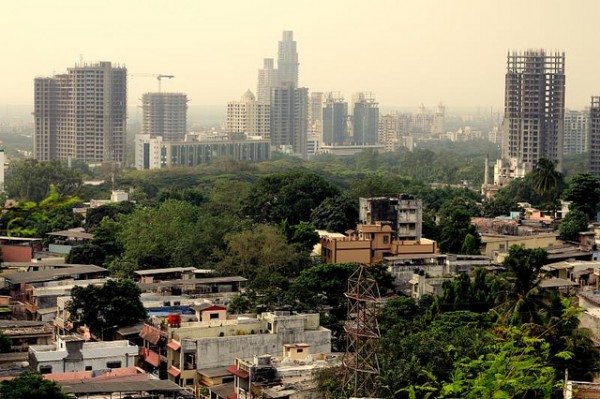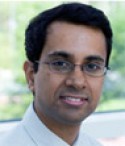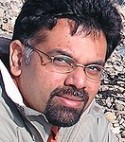
India is often touted as the next “Asian tiger,” but the country also suffers from ethnic conflict, widespread malnutrition, and a growing divide between rich and poor. Is the optimism for India’s future in proper proportion to facts on the ground? In advance of Is India Rich or Poor?, a Zócalo event featuring author Patrick French, three scholars consider whether India’s potential lives up to the hype.
The hype might match the potential-for now

Predicting the destiny of nations is impossible even in the best of times. The Soviet Union and Japan once appeared to be unstoppable and created panic in some quarters. China’s proximity to superpower status increases daily. Many have started mentioning India almost in the same breath, arguing that India’s growth, while more modest than that of China, is also more sustainable, thanks to India’s democracy and free press. Also, in this age of recession, 8-percent growth rates in a country as large as India inevitably make people sit up and take notice.
Much of India’s economic success is on terra firma. A rising middle class with an insatiable appetite for goods and services has created a virtuous cycle for that feeds on itself. Liberalization and an unlocked spirit of competition and enterprise are changing India’s cities and factories by the day and neon-lit night. A young population promises to keep the nation roaring. India’s growth is undeniably real and promising.
Does that make India the sure bet for 2050? It depends. Can she spread the gains from growth to the increasingly restless poor, who, by various estimates range from 27 percent to 77 percent of the country’s population? Can she achieve life expectancy on par on with-well, at least that of neighboring Bangladesh? Can she wipe out worse-than-sub-Saharan rates of child malnutrition? Can her antiquated education system prepare hundreds of millions of new job market entrants-her “demographic dividend”-for the jobs of the 21st century? Can she balance the agriculture that still supports over half her population and accounts for a fifth of her output with a straining-at-the-leashes services sector that is changing lives of lucky millions-millions that still constitute only a minuscule part of her population? For decades after India’s independence, the world had speculated whether she could hold together as a nation. Her chances of emerging as an economic superpower in the next few decades are no easier to guess.
Rajesh Chakrabarti is assistant professor of finance at the Indian School of Business.
————————————-
The hype is coming from U.S. and Indian capitalists

India, like any other country, is an object of political disputation, in which all sorts of interests collide. There is no “real” India out there-just as there is no “real” United States. The principal topic for discussion today ought to be how India is entangled in the political and cultural economy of globalization. India used to be a foil for the proponents of U.S. superiority who thought America had all the answers for the world’s problems. Now it is otherwise.
The notion of India as a rising great power-like China-necessarily has its detractors. Some of these detractors are simply people who do not relish the prospect that the U.S. and Europe are in relative decline. Others are people who are fighting against the ravages of global capitalism in India, where poverty today is not the result of resource constraints but rather the product of the inequities of capitalist economic development, as it is in America.
To the extent that there’s hype about India, it’s the work of U.S. and Indian business interests that want to promote the idea that India’s economic success benefits the U.S. Actually, it’s only really helpful to U.S. capitalists who prefer to hire cheaper workers in India rather than invest in American jobs.
David Ludden is professor of history at New York University.
————————————-
Hype is hype, but don’t underestimate hope

The hype over India’s rise can be considerably deflated by realities on the ground. The usual symbols of a nation’s prosperity-like “world-class” roads and airports, shopping malls and gated communities-are inevitably overrun in India by the nation’s seemingly endemic chaos. Compared to the well-ordered prosperity of other nations, the new India can seem much like the old one, with all its traffic woes, power cuts, and, of course, poverty.
Today, there is a rich India and a poor India. One pursues lifestyle, the other scrambles for livelihood. One goes to slimming salons, while the other struggles to buy food. One is dreaming in billions, while the other is waging a war for survival-for a few rupees a day-against a corporate-cozy state.
But to see India solely in these terms is to miss one important factor: what it all means to its people. Unlike some other countries today, India is one place where people express a firm and widespread belief that their lives will be better than those of their parents. They earn more, too.
And, despite a growing culture of consumerism and self-gratification in India, there is also a desire among Indians that their children should do even better than them. Education is revered and sought after for this reason alone.
How this optimism will play out in terms of India’s politics, economy, and culture is a formidable question. But India’s potential remains in its people-and in the fact that they still believe they have something to live for.
Vamsee Juluri is a novelist, author and professor of media studies at the University of San Francisco.
*Photo courtesy of d ha rm e sh.



